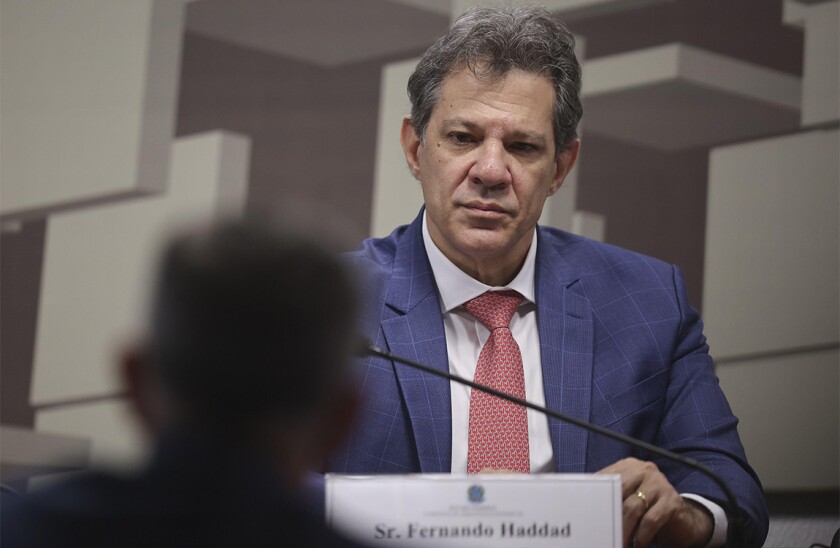If financial leaders act urgently to increase climate investments they could unlock a $1tr-a-year growth opportunity that would create hundreds of millions of jobs and protect lives, according to three reports on Thursday.
Two separate alliances of finance ministers called for climate finance to be magnified to the 2035 target of $1.3tr a year set by last year’s COP 29 climate summit.
Meanwhile, a consortium of 20 thinktanks, NGOs and universities said investment in climate resilience and nature projects could create more than 280m jobs in emerging and developing countries by 2035, boosting the most vulnerable states’ economies by as much as 15%.
The COP 30 Circle of Finance Ministers, coordinated by Fernando Haddad, Brazil’s finance minister (pictured), set out five priorities which it will present at the summit in Belem in November.
It said mobilising finance to hit $1.3tr would require “structured and sustained efforts” by public and private bodies. Its top priority is to scale up concessional finance and make best use of climate funds. The other four are: reform multilateral development banks; boost domestic capacity for climate finance; find ways to mobilise private capital; and strengthen regulation of climate finance.
The Circle, which includes countries as diverse as the UK and the Marshall Islands, said inaction on climate change disproportionately exposed the most vulnerable populations — which had contributed least to emissions — to “escalating climate risks”.
“Every year of delayed climate action raises both the investment needed and the risks faced,” the ministers said. “Urgent and coordinated action is indispensable to safeguard lives, livelihoods and sustainable growth.”
Meanwhile, the older 70-strong Coalition of Finance Ministers for Climate Action issued a strong case for the economic benefits of tackling global warming.
They said the pro-climate policies Coalition members had enacted had enabled their economies to seize opportunities from the transition to a low carbon, climate-resilient economy.
“Climate action is central to both economic stability and development,” said Matia Kasaija, Ugandan finance minister and co-chair of the Coalition. “Finance ministries [are] playing a more pertinent role in climate policies — aligning fiscal policy with climate priorities… and working towards a more predictable environment for unlocking the investment needed.”
The Coalition has published a database of more than 500 climate policy actions by member countries. It showed that two thirds of countries were scaling up green bonds, emissions trading systems and blended finance to mobilise private capital for climate action. One in seven was integrating climate risks into public financial management while one in 10 was introducing carbon taxes, phasing out harmful subsidies and expanding clean energy incentives.
“By aligning fiscal and general financial policies with climate objectives, we can create clear, predictable frameworks that attract investment, support innovation and ensure the transition strengthens — not destabilises — our economies,” said Marko Primorac, incoming co-chair and Croatia’s finance minister.
The Returns on Resilience report, launched by 20 partners, analysed the economic and financial benefits of investment in climate adaptation. It found that the adaptation and resilience market could reach $1.3tr annually by 2030, while saving some of the 1m-2m additional deaths expected annually by 2050 without action.
The report also calculated the cost of failing to act. Temperature and rainfall shifts have already destroyed at least $525bn of economic expansion over the past 20 years in developing nations.
Launching the report, Mia Mottley, prime minister of Barbados and architect of the Bridgetown Initiative on climate finance reform, said: “We continue to recognise that the work of building resilience is at the core of everything that we do.”
Without intervention, both sudden disasters and gradual environmental changes like biodiversity decline could cost major global corporations $1.2tr by the 2050s, amid a worldwide GDP reduction of 18% to 23%.
Despite the evidence, capital still flows in the wrong direction, the report warned. For every $1 spent on resilient infrastructure, $87 goes on infrastructure that does not include resilience considerations, such as buildings in flood zones.
